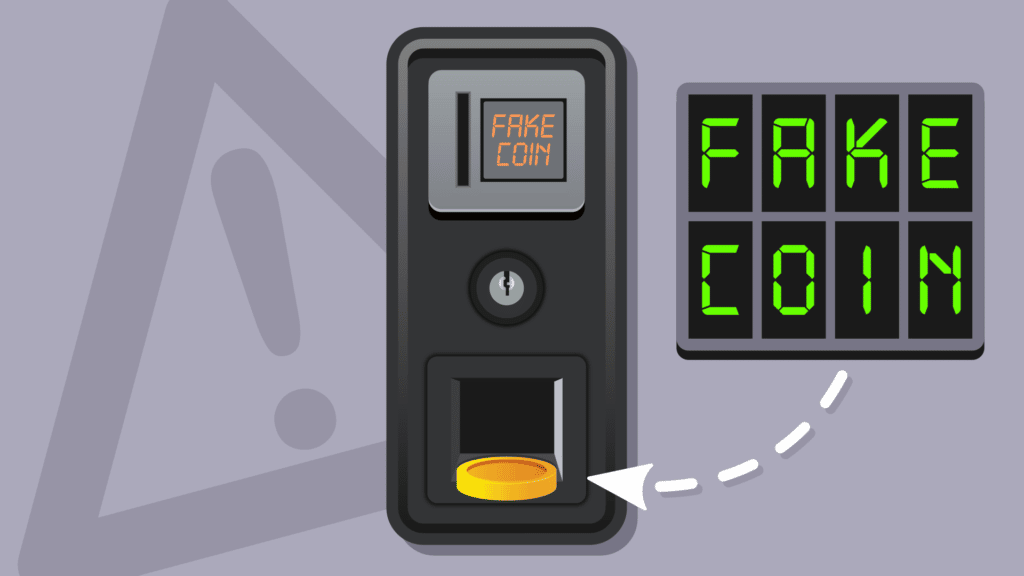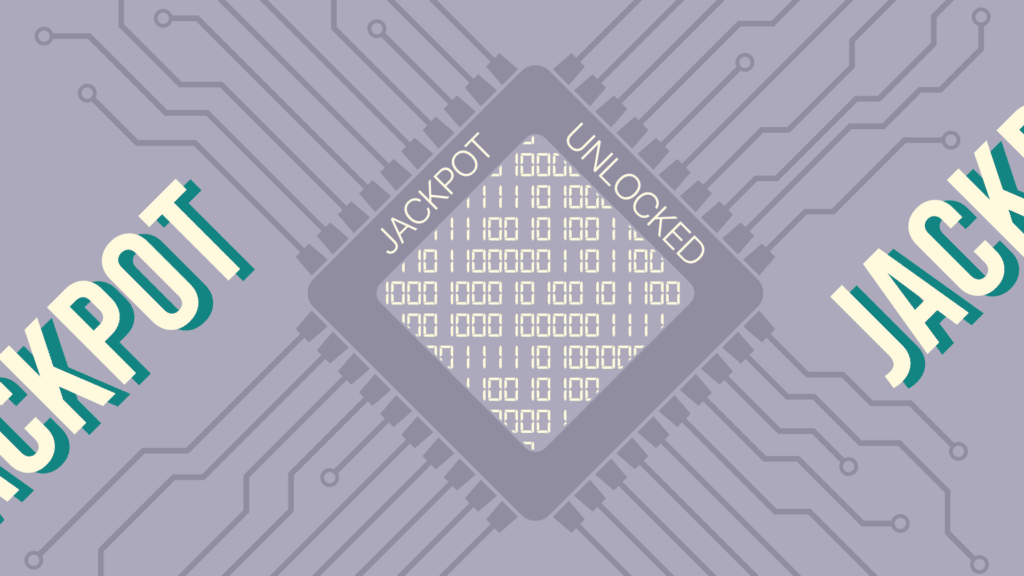Despite being much ‘younger’ than card games or roulette, slots hold a special place in many players’ hearts. And we’re still unsure as to why, but we have a hunch. Unlike other casino games, slots are completely random. No matter what you do or how much you practice, it will change the likelihood of winning.
While most people found this more thrilling, others were willing to find ways to cheat the system. Throughout the years, various con artists and professional gamblers were able to twist the reels in their favor.
Our team decided to find the best ways to cheat at slots throughout the years to show you how slots evolved. Keep in mind that most machines are entirely software-based, rendering many of these methods obsolete. So sit back, relax, and marvel at these displays of ingenuity.
Yo-Yo
In the 1980s and 90s, slots used an internal sensor or button to register whether a coin had been dropped or not. You would insert the money and the game would be triggered as the coin made contact while falling down.
After a couple of tech-savvy gamblers got their hands on a slot machine, they saw the coin-triggered button/sensor was around the midway point of the coin’s way down. With that in mind, they realized that a game could start without the coin being actually dropped. How, you may ask?
Well, the cheaters would tie the coin to a retractable string. Upon arriving at the casino, they would lower it until a new game was triggered. Since it could be pulled back up, the player would effectively get an infinite amount of games for free.
The yo-yo technique was one of the classics, but casino owners quickly caught up and started abandoning these easily manipulated machines. But during the time it was popular, this approach could win you a hefty amount of money with a team of just 2-3 people playing at the same time.
Knowing the Source Code
Since slots are completely digital nowadays, mechanical manipulation is impossible or too tedious to be worth it. That’s why any successful attempt at cheating must involve knowing the inner workings of the game. Ideally, this would involve the source code of the game.
Unfortunately, this information is confidential, and no one aside from the developers themselves has knowledge of this. Until someone manages to hack into the database, that is. Now, it goes without mentioning that this is highly unlikely nowadays.
It’s mostly because regulators require software providers to apply strict security measures, such as encryption, regular audits, and anything else that might throw a wrench in the hackers’ plans. And even if a game was successfully hacked, the developer would most likely notice and take action. Their business depends on the games being fair, so they can’t afford to slip up.
Fake Coins
The earliest slot machines contained a small button/level with which the coins made contact. The interaction with this primitive sensor was a sign for the machine to start spinning, as the required amount of money was added to the mix. It didn’t take long before professional cheaters got their hands on the machine and found out how it works.
As a result, fake coins were born. At first, they only seemed like the real thing, with the only goal being to push the button and get the slot to spin for free. Game manufacturers quickly caught wind of this, and a long game of cat and mouse began.
The next step was the introduction of light sensors within the tubes that are located inside the machine. They work by emitting a ray of light, and if that ray gets broken for even a second, the reels start spinning. Sadly, developers fully digitized slot machines in the late 2000s, making this trick obsolete.

Bill Validator Device
Aside from coins, casino slot machines also accept bills. This gave cheaters a bit of extra work, but they quickly managed to beat the paper money slot, too. The key to this sneaky approach is a device called the bill validator. It’s a small mechanism that’s wrapped around a bill, disguising key markings on the paper.
Back in the day, this allowed people to fool the slot machine into thinking it was getting a $100 bill when in reality, it was only getting $1. Even though this trick isn’t that old, it was ‘eradicated’ pretty quickly because casinos don’t take theft of this kind lightly. As a result, machine manufacturers upped their game and made it impossible for a bill to be accepted without being fully inserted.
Manipulating Software Glitches
Even in the early days, slot machines had some form of software within them. Sure, it might not be the multi-platform software with a fancy UI you’re used to, but rudimentary programs were used to ensure all results were random. As simple as these programs were, no one can ever predict how code behaves in certain situations.
That’s how cheating slots using software glitches became a thing. People found out that, sometimes, for whatever reason, the slot machine would start bugging, ejecting cash, or showing favorable reels. And to make things even funnier, these glitches were sometimes caused by a random combo of buttons being pressed.
One of the most famous examples of this is the time when 90-year-old Pauline McKee won $41 million on a slot machine in an Iowa casino. She sued the owners in 2012, but previous court cases have set a precedent that’s
Inserting Manipulated Software Chips
This approach is out of reach for most people, as it requires not only extensive knowledge of how slot machines work but also impressive organizational capabilities. As a result, it’s no surprise that few people even dared to try it. Of these brave individuals, Dennis Nikrasch is by far the most famous one.
He’s the mastermind behind the biggest Vegas heist ever, with him and his team siphoning over $16 million across a period of 22 years. A career locksmith with a knack for all things tech, Dennis got his hands on a slot machine disassembled it, and put it back together many times over. It is at this point that he realizes the chips can be reprogrammed to automatically trigger a jackpot win.
With the help of a few people and extensive planning, Nikrasch managed to fool casino owners like nobody before or since. Nowadays, there are eyes on every corner, and even touching a machine suspiciously will cause security to appear in a matter of seconds.

The Atlantic City Piano Wire
We can’t forget about the old school, and there’s no old-school trick more iconic than the piano wire. Here’s how the whole thing went. It was 1982, and a group of average-looking men walked into the Caesars Boardwalk Regency casino. As soon as they entered the premises, they beelined to the slots section.
The others were suspiciously looking around while the ring leader began lowering a 20-inch long piano wire into the guts of the slot machine. He did so through the coin slot and managed to jam the internal clock tasked with measuring spins.
After messing around a bit, they hit the $50,000 jackpot. But just as they were exiting the casino, security caught up with them. Since they were filmed in the act, the authorities soon apprehended them. And thus, piano wires became a banned item around Atlantic City casinos.
Top-Bottom Emptying
Compared to other methods on this list, this is by far the easiest way to cheat at slots. Professional cheaters developed the top-bottom tool in the 1970s. It featured a bent metal rod at the top and a long wire at the bottom. The top part goes into the coin slot while the wire is inserted into the chute.
In the old days, triggering these two openings would cause the machine to empty all its coins. Even to this day, there hasn’t been a slots cheating technique that’s been more accessible than this one. It goes without saying that there’s no point in trying something like this on today’s digital slots.
Magnets
When it comes to cheating at slots in popular culture, this is what everyone thinks of. Before today’s machines, the oldest ones were made out of metal, and the outer body was nothing more than thin aluminum or another alloy. This allowed cheaters to sneak a magnet in their coats and manipulate the reels so that they stopped winning when they wanted them to.
Just like the previous method, this one was used by the Average Joe but wasn’t all that fruitful. To be fully successful, you needed to use a strong magnet at just the right spot to stop the reels. Not everyone could do that. Even still, early slot machine software could record how the spin went, allowing casino staff to verify big wins on the spot.

Disrupting the Light Sensors
Tommy Carmichael became one of the most beloved casino tricksters because of his ingenious invention, the light want. This plastic device would shoot targeted beams of light so that they trick the coin-triggered light sensors within the slot machine. Carmichael and his cronies used this method to play thousands of free spins and scam Vegas casinos out of millions.
And this was the tip of the iceberg when it came to Tommy’s exploits. He also invented numerous other devices and even continued to cheat after being in prison several times. As light sensors became a thing of the past, so did this cunning man’s exploits against slots.
Can You Cheat at Other Casino Games?
Cheating at slots is much more difficult than doing so at other casino games. Simply put, they’re completely random, whereas their counterparts are more or less affected by the player’s skills. Blackjack is everyone’s favorite for this, mainly because of card counting.
To gauge the next card, players add and subtract numbers in their heads depending on whether the dealer draws a high or low card. Only pros can pull off advanced techniques without being noticed. While the act itself isn’t illegal, casinos can ban you permanently if you’re caught.
Roulette, on the other hand, is a bit harder to rig. Colluding with the dealer is one possibility, but it’s very hard to purposely hit even a radius of 10 slots, let alone the exact one you want. Electronic roulette systems are pretty much the Wild West, though. To ensure you’re not playing on a rigged machine, make sure the software provider is a well-known, reputable company. If it’s a random brand with bad English, it’s most likely dodgy.
Another game casino-goers love to cheat at is poker. Marking cards is the most-used technique. Sometimes, players use invisible ink on one hand to mark high cards. Once they went through the whole deck a couple of times, special lenses or glasses let them see the ink. Sadly, infrared cameras and all kinds of sensors make this almost impossible.
Is It Possible to Cheat at Slots in 2024?
It’s very hard to cheat at slots in 2024. However, it’s still theoretically possible to do so. The best example of this is shady game suppliers and sites licensed in tax havens. Using rigged code, the developers allow casino operators to raise the house edge. This is hard to notice, as people already expect not to win anything at slots. Look for seals of approval from third-party auditors.
Another way slots may be rigged is also the work of the casino itself. Some sites rig popular games and pay influencers to stream themselves whilst gambling. During the stream, the individual wins at a very high rate, coaxing their viewers into playing at the casino. To make things even worse, many sites pay their brand ambassadors a percentage of players’ losses. Thus, you should never believe someone’s lucky win at face value. Look for facts and evidence.
